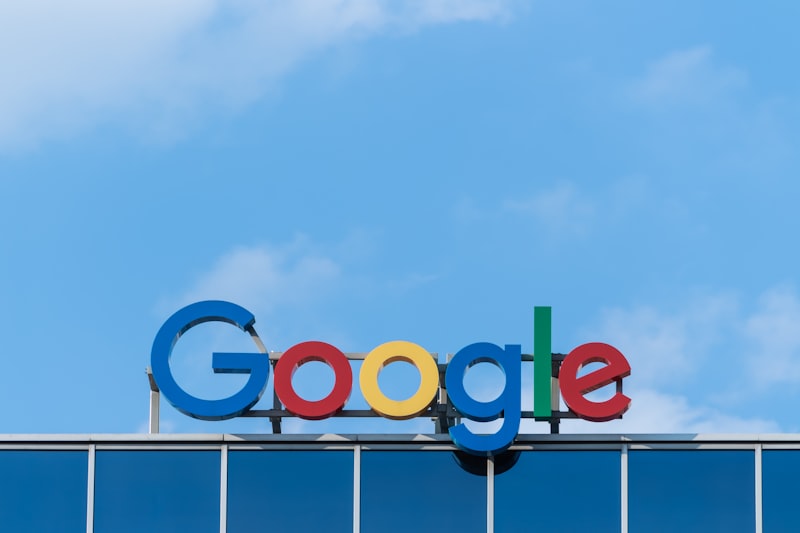First off, let’s understand what brand loyalty is all about. It’s not just about repeat purchases; it’s about creating a bond that withstands competition and economic ups and downs. Imagine your brand as a trusted friend—someone your customers turn to automatically because they know you deliver value consistently.
One of the foundational pillars of building brand loyalty is trust. Trust isn’t built overnight; it grows with every positive interaction and every promise fulfilled. When customers trust your brand, they’re more likely to choose you over competitors, even if it means paying a bit more.
Another key strategy is excellent customer service. Picture this: you walk into a local coffee shop where the barista knows your name and your usual order. It makes you feel valued, right? The same applies to brands. When customers feel valued and appreciated, they’re more inclined to stick around.
Consistency is another game-changer. Think of your favorite fast-food chain. No matter where you go, you expect the same taste and quality. Consistency breeds familiarity and builds trust. Whether it’s your product quality, customer service, or brand messaging, staying consistent reinforces your brand’s identity.
Engagement plays a crucial role in nurturing loyalty. It’s not just about pushing out content; it’s about creating meaningful interactions. Social media platforms are gold mines for this. Responding to comments, starting conversations, and showing the human side of your brand can create lasting connections.
Rewarding loyalty can seal the deal. Everyone loves perks, right? Whether it’s a birthday discount, exclusive offers for long-time customers, or a loyalty program with redeemable points, incentives show appreciation and keep customers coming back for more.
Lastly, storytelling can be a powerful tool. Humans are wired to connect through stories. When you share your brand’s journey, values, and impact, you invite customers to be part of something bigger than just a transaction.
Unveiling the Power of Personalization: How Tailored Experiences Boost Brand Loyalty
Imagine this: you walk into your favorite café, and before you even place your order, the barista greets you by name and asks if you’d like your usual latte with a dash of cinnamon. How does that make you feel? Special, valued, and connected, right? That’s the magic of personalization in action, and it’s not just confined to your local hangout—it’s becoming a game-changer for brands aiming to win over hearts and minds.
Personalization isn’t just about addressing customers by name; it’s about understanding their preferences, anticipating their needs, and creating tailored experiences that resonate deeply. Whether you’re shopping online, browsing social media, or interacting with customer service, personalized touches can make all the difference in how you perceive a brand.
Think about it this way: would you rather receive generic emails offering products that don’t interest you, or would you prefer recommendations based on your past purchases and browsing history? Most of us lean towards the latter because it shows that the brand cares about our individual preferences and is willing to go the extra mile to enhance our experience.
The beauty of personalized experiences lies in their ability to foster a sense of loyalty. When a brand consistently delivers relevant content, product suggestions, or promotions that align with our interests and behaviors, we’re more likely to keep coming back. It’s like having a personal shopper who understands your style perfectly and always picks out the best outfits for you—except in this case, it’s about products and services that cater to your specific needs and tastes.
Moreover, personalization isn’t just a nice-to-have feature anymore; it’s becoming an expectation among consumers. In a world where choices abound, brands that can tailor their offerings stand out amidst the noise. They create a bond with their customers that goes beyond transactional interactions, building a long-lasting relationship based on mutual understanding and respect.
As businesses embrace the power of data analytics and AI-driven insights, the possibilities for personalization are endless. From customized recommendations to personalized marketing messages, brands are leveraging technology to create meaningful connections with their audience at scale.
From Transactional to Transformational: Building Emotional Connections with Consumers
Gone are the days when consumers were merely transactions on a balance sheet. Today, companies are realizing that fostering genuine emotional connections is the key to long-term success. It’s about moving beyond the one-time purchase to creating a relationship that resonates with the customer on a deeper level. Imagine your favorite café where the barista knows your name and remembers your usual order—it’s that feeling of being recognized and valued that keeps you coming back.
So, how do brands achieve this emotional resonance? It starts with understanding the needs, desires, and pain points of their customers. Instead of bombarding them with generic ads, successful brands take the time to listen and empathize. They anticipate what their customers want before they even realize it themselves, creating a sense of anticipation and delight.
Think about companies like Apple or Nike—they don’t just sell products; they sell lifestyles and identities. When you buy an iPhone or a pair of Air Jordans, you’re not just purchasing a gadget or shoes; you’re buying into a narrative of innovation, style, and aspiration. These brands have mastered the art of storytelling, weaving emotions into every aspect of their marketing strategy.
Moreover, transparency and authenticity are non-negotiable in today’s consumer landscape. People want to support brands that align with their values and beliefs. Whether it’s sustainability, inclusivity, or ethical sourcing, consumers are increasingly making purchasing decisions based on what a brand stands for.
Exclusive Insights: The Role of Customer Feedback in Strengthening Brand Loyalty
Imagine feedback as a compass guiding a ship through turbulent waters. It provides direction, clarity, and insight into what customers truly value. When brands actively seek and listen to customer feedback, they gain invaluable perspectives on their products, services, and overall brand experience. This isn’t merely about collecting data; it’s about harnessing insights that drive meaningful improvements.

One of the key aspects of customer feedback is its ability to foster a sense of partnership between brands and their customers. By soliciting feedback, brands signal that they value their customers’ opinions and are committed to meeting their needs. This inclusivity builds trust and loyalty, as customers feel heard and appreciated.
Moreover, customer feedback serves as a reality check for brands. It provides a direct line to understanding what’s working well and what isn’t. Just like a mirror reflects our image, feedback reflects the true perception of a brand in the eyes of its customers. This transparency is crucial for brands aiming to stay relevant and responsive in a fast-evolving market landscape.
Think of customer feedback as a continuous conversation rather than a one-time survey. Brands that prioritize ongoing dialogue with their customers not only gather more nuanced insights but also strengthen the emotional connection customers have with their brand. This emotional bond goes beyond transactional relationships, fostering a community of loyal advocates who actively promote and defend the brand.
Beyond Discounts: Innovative Ways Brands Are Rewarding Loyalty
Imagine this: you’ve been a loyal customer of a coffee shop for years. Instead of just giving you a free drink after every ten purchases, they surprise you on your birthday with a personalized mug, engraved with your name. It’s not just a gift; it’s a token of appreciation that makes you feel valued.
In the digital age, some brands are using technology to personalize rewards like never before. Picture receiving a notification on your phone from a clothing store you frequent. It’s not about a sale; it’s a message tailored just for you, offering early access to new collections based on your past purchases. Suddenly, shopping feels more like a VIP experience.
Other brands are embracing experiential rewards, understanding that memories can be more valuable than material gifts. Take a hotel chain that upgrades loyal guests to exclusive suites, complete with breathtaking views and personalized service. It’s not just a room upgrade; it’s a stay that leaves a lasting impression.

But loyalty rewards aren’t just about individual perks. Some brands are focusing on social impact, tying loyalty to charitable giving. For instance, a cosmetics company might donate a portion of your purchases to environmental causes you care about. It’s loyalty that goes beyond the transaction, creating a sense of community and shared values.
Innovation in loyalty rewards isn’t limited to big brands either. Local businesses are finding unique ways to thank their regulars, from hosting invite-only events to partnering with other businesses for cross-promotional perks.
The Digital Frontier: Leveraging Technology to Foster Lasting Brand Relationships
Imagine technology as your trusty guide, leading you through a vast, uncharted terrain of consumer interactions. It’s not just about flashy gadgets or fancy algorithms; it’s about using these tools strategically to leave a lasting impression on your audience. Think of it as building a campfire in the digital wilderness—you want it to be warm, inviting, and memorable.
One of the key tools in this journey is personalization. Just like a skilled host remembers your favorite drink at a party, technology allows brands to tailor experiences to each individual customer. From personalized emails that greet you by name to curated product recommendations based on your preferences, these small gestures go a long way in making customers feel valued and understood.
But it’s not all about personalization. Technology also opens doors to engagement like never before. Social media platforms act as bustling town squares where brands can interact directly with their audience in real-time. Whether it’s responding to a customer query or sharing user-generated content, these interactions humanize the brand and build trust.
Moreover, technology enables brands to tell compelling stories that resonate deeply with their audience. Through immersive content like videos, virtual reality experiences, or interactive websites, brands can transport customers to new worlds and evoke powerful emotions. It’s like painting a vivid picture that customers can’t help but be drawn into.
In essence, the digital frontier isn’t just about leveraging technology—it’s about using it wisely to foster genuine, lasting connections with your audience. By harnessing the power of personalization, engaging directly on social platforms, and crafting compelling narratives, brands can navigate this frontier with confidence, leaving a trail of loyal customers in their wake. So, saddle up and embrace technology as your trusted ally on this journey towards building meaningful brand relationships that endure the test of time.
Community Building 101: Creating Tribes Around Your Brand
Building a tribe or community around your brand goes beyond just having customers; it’s about fostering a sense of belonging and connection among them. Imagine your brand as a campfire, and your customers as the people gathered around it, sharing stories, experiences, and ideas. It’s about creating a space where they feel valued and heard.
One of the first steps in community building is defining your brand’s identity and values clearly. What does your brand stand for? What are your core principles? Your tribe will be attracted to these values, so make sure they shine through in everything you do, from your products or services to your communications.
Next, engage with your audience consistently and authentically. Think of it as nurturing relationships rather than just selling. Respond to comments on social media, participate in discussions, and show appreciation for your community’s support. When people feel acknowledged, they’re more likely to become loyal advocates for your brand.
Another key strategy is creating valuable content that resonates with your audience. Share stories, tips, or insights that demonstrate your expertise and provide genuine value. This not only keeps your community engaged but also positions your brand as a trusted resource in your industry.
Collaboration is also essential in community building. Partner with influencers or other brands that share your values to reach a wider audience and foster new connections. When you work together towards a common goal, you strengthen your tribe and create a network of support for your brand.
Lastly, don’t forget to celebrate your community’s successes and milestones. Whether it’s a product launch, a customer testimonial, or a community event, recognize and appreciate those who have helped you along the way. This not only reinforces their loyalty but also encourages others to join your tribe.
Frequently Asked Questions
What role does customer experience play in fostering brand loyalty?
Learn how enhancing customer experience can significantly boost brand loyalty by building strong emotional connections and trust with customers, ultimately leading to increased retention and advocacy.
How can businesses recover from a loss of brand loyalty?
Learn effective strategies for rebuilding brand loyalty after setbacks. Discover methods such as improving product quality, enhancing customer service, and transparent communication to regain trust and loyalty.
What are the key benefits of building brand loyalty?
Discover the advantages of cultivating brand loyalty. Learn how it boosts customer retention, drives repeat sales, enhances brand reputation, and fosters advocacy, ultimately leading to sustained business growth.
What are some effective digital marketing strategies for enhancing brand loyalty?
Discover effective digital marketing strategies to boost brand loyalty, such as personalized email campaigns, engaging social media interactions, loyalty programs with rewards, targeted content that adds value, and leveraging user-generated content.
How can businesses measure brand loyalty effectively?
Learn effective methods for businesses to measure brand loyalty, ensuring accurate insights. Explore strategies like customer surveys, repeat purchase analysis, social media engagement metrics, and Net Promoter Score (NPS) to gauge customer loyalty levels.


